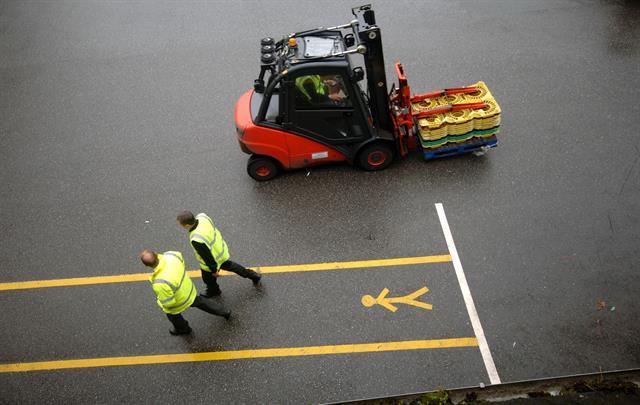 Tim Waples |
Tim Waples is chief executive of the Fork Lift Truck Association.
The events of the past few weeks have had a transformative effect on businesses everywhere. Social distancing has changed the way we interact with each other, and the physical layouts of premises have been altered to reduce the amount of contact we have.
But for those who work with materials handling equipment, the idea of keeping a safe distance is not new. There are many sites where forklifts and pedestrians operate in the same space, and ideally should never be in close contact. Sadly, this isn't always the case. So pertinent is the topic of pedestrian and forklift segregation that BITA made it the focus of the UK's National Forklift Safety Day on 9 June.
So, what can be done? There are many measures that can be easily put in place to separate forklifts and pedestrians, and although cost, layout and other operational considerations may impose limitations, even small changes can make a big difference for those working on foot.
First, review your site and identify areas where forklifts and pedestrians operate close together. Is it absolutely essential for those pedestrians to be there? If not, exclude them. If their presence is essential, then equip them with appropriate PPE, such as hi-vis vests, that make them stand out on the shop floor.
Where pedestrians can't be excluded, create separate but clearly marked routes for them. Ideally, these should follow the paths employees would normally take (often known as 'desire lines') to encourage maximum usage. Where required, there should be crossing points that are signposted and well lit.
 Keep pedestrians away from equipment |
Pedestrian routes can be identified by painted lines, hashed areas and signage, but physical barriers are far preferable. Raised pavements are an option, as are metal or plastic barriers. One-way systems are also effective. In areas where space is particularly tight, you could consider overhead walkways.
There are lots of safety features that can be fitted to forklifts, such as blue lights that alert pedestrians, or safety zone lights that are projected around a forklift. Speed limits are also effective and adding wall-mounted mirrors can aid visibility at corners.
Maintaining a heightened sense of awareness amongst staff is also crucial, as familiarity can lead to complacency, which in turn leads to accidents. Forklift awareness training is worth considering for those who work in the same areas as forklifts on site, as well as for operators. It ensures that everyone understands the consequences of accidents - which can be severe and last a lifetime - and instructs them on how to keep themselves and colleagues safe.
As we all know, safety is a collective responsibility. Your policies should encourage ownership and reporting, while enforcing standards. You should welcome and invite suggestions from workers and act upon them, as doing so gives your workforce a sense of ownership and involvement in your safety practices.
Although making changes at any time can be daunting, they are worth the time and effort. This was particularly true for cereal producer Kellogg's, which recognised the importance of pedestrian segregation at its Manchester plant in the UK. The need for more safety measures became apparent, and the site underwent a huge transformation. Kellogg's installed 1.2 mi. (1.9 km) of safety barriers at various points, updated trucks with multiple safety features, improved its reporting procedures, and engaged staff to encourage best practice. The project even earned Kellogg's the 2019 Safe Site Award at the Fork Lift Truck Awards for Excellence.
The company's success demonstrates that change is possible even in old and challenging locations. Businesses have already shown willingness and ability to adapt their operations due to the recent crisis, so why not use this opportunity for a complete audit of your site to identify areas of potential danger. Although social distancing may not last forever, the principles of staying apart and staying safe will hopefully continue to resonate with those responsible for forklift operations as well as those on the front line.